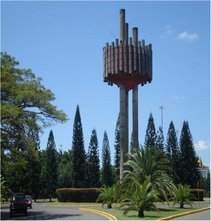
Significant changes in university education have occurred in Latin America, caused by the strategic importance that it has on economical and social development. The educational system expanded and science, technology and informatics, experienced an important development. The eighties were characterized by a reduction in government expenditures, a more efficient use of resources, an increase in the number and variety of universities and university students. The creation of new universities, mostly private, was favored by a highly unregulated market. In Latinamerica, more new universities were created during the eighties than in the previous one hundred years. Since 1981, the number of universities in Chile increased from 8 to 60, the type of institutions was diversified, the government financing of public universities decreased substantially and the regulatory role of the market was emphasized. These changes have been quantitatively understandable but qualitatively unsatisfactory. Since 1981, the number of university students between 19 and 24 years old has triplicated. The number of medical schools and the annual admission of students has duplicated. In most Latin American countries, there is an insufficient number of physicians (Chile has one physician per 783 inhabitants). Since the decade of the nineties, an effort has been made to regulate the market, to introduce new barriers for the acceptance of new educational institutions, to improve the transparency of the system and to preserve the quality of teaching. The quality control of medicine and health is one of the most serious problems in Latin American countries. This includes accreditation of medical schools, health centers and specialists. In Chile there have been some progress in these topics but quality control is still unsatisfactory (Rev Méd Chile 2002; 130: 917-24).









No hay comentarios:
Publicar un comentario